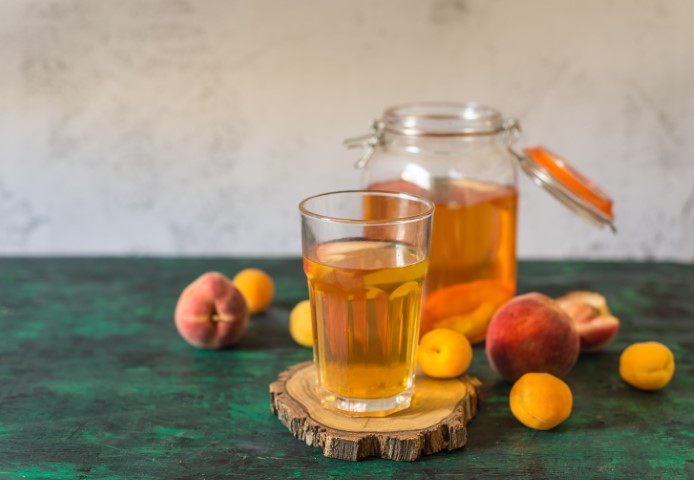
Kombucha flavours to savour
By Jacey Gibb, Distribution Manager
Welcome to ‘Bucha Basics, where we cover everything there is to know about homebrewing kombucha
Last week, we did a victory lap after finishing your first batch of kombucha. I briefly covered the secondary fermentation phase, aka where you add any flavouring agents, but it’s worth covering in its own article since there’s a lot of ground to cover.
Technically, your kombucha is good to go after the first fermentation period. However, I find unflavoured kombucha to be somewhat bland, so I’m a strong advocate for taking a few extra steps, adding fruit, and leaving it for a few days. Your taste buds will thank you.
For its sheer convenience, I recommend keeping a few bags of frozen fruit in the freezer to have on hand. Kombucha already has a few steps, so you can at least cut down on the prep time. In terms of cost, frozen fruit is also comparable to fresh fruit, with No Name brand’s costing about $4.
On the opposite side of the spectrum, if you have an abundance of fresh fruit and a dwindling time window to consume it in, feel free to use fresh fruit. Once I had diced pineapple leftover from a party, and I just tossed it into a fermenting batch, and the results were delish.
As if the wealth of fruit options wasn’t paralyzing enough, you can even add fresh herbs to give new variations. I’ve used lavender, rosemary, and mint, but there are some even wackier combinations online. It all comes down to your preferences, so just have fun with it.
Here are a few fruits/combinations that get the ol’ Gibb stamp of approval:
Mango: possibly my favourite. Light and fruity, but also mild enough to combine for kombucha cocktails—more on that in a future article, though.
Strawberries: very sweet, and it transforms the kombucha into a bright, ruby colour.
Blueberries: use slightly fewer blueberries than you would any other fruit; otherwise, the kombucha will come out overly tart. Blueberry kombucha ends up a deep, dark purple.
Ginger: blame my parents for feeding me Canada Dry anytime I felt sick, but there’s something about the taste of ginger that feels medicinal. Ginger pairs really well with other fruits, but add in smaller doses, so it doesn’t overwhelm the other flavours.
It’s worth mentioning: every step along the way of kombucha brewing is an experiment. It’s entirely possible to have a great batch, and follow the steps exactly for the following brew—yet have things turn out completely different. Keep track of your process (how much fruit you’ve added; how many days you’re leaving it to ferment) and learn from any mistakes. A ‘buchmaster’s job is never finished.

